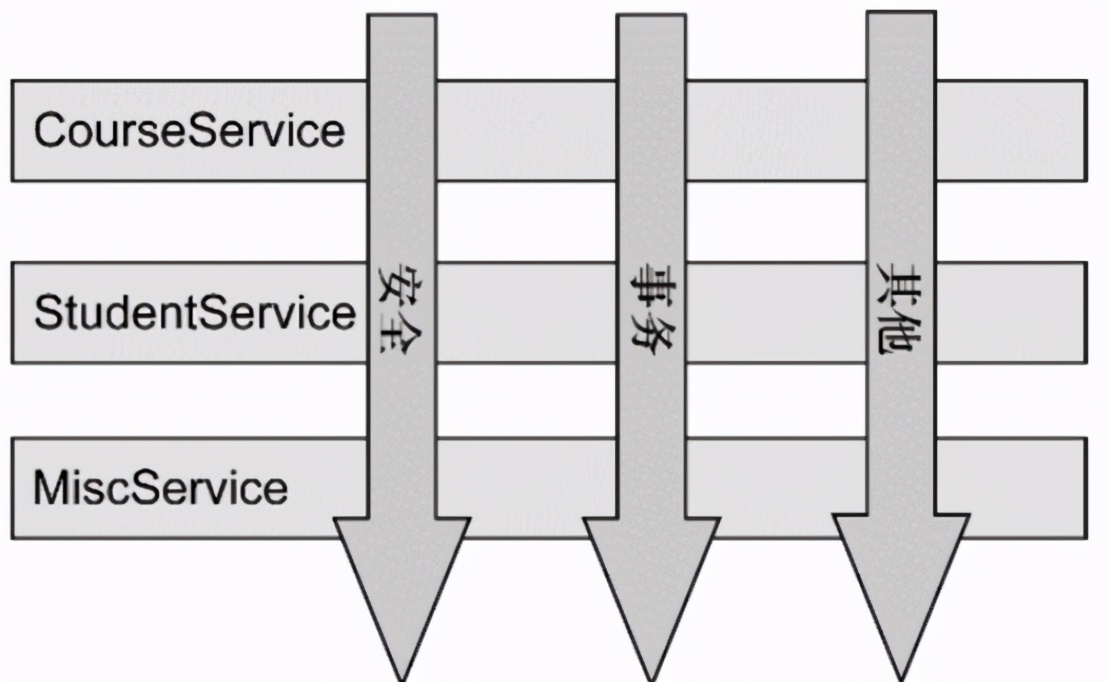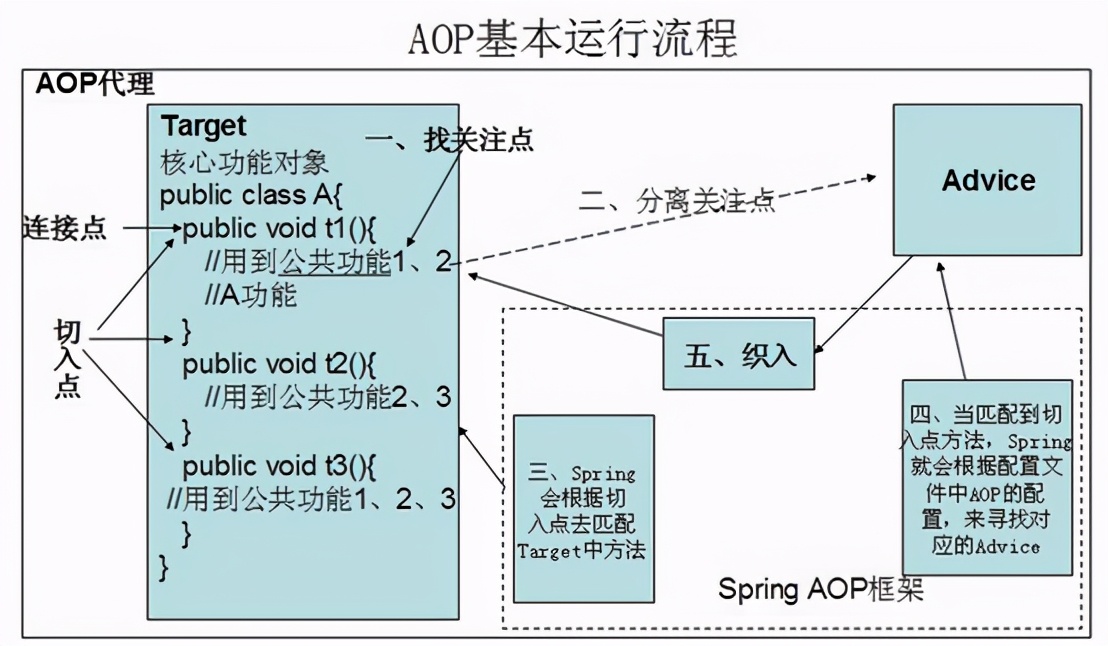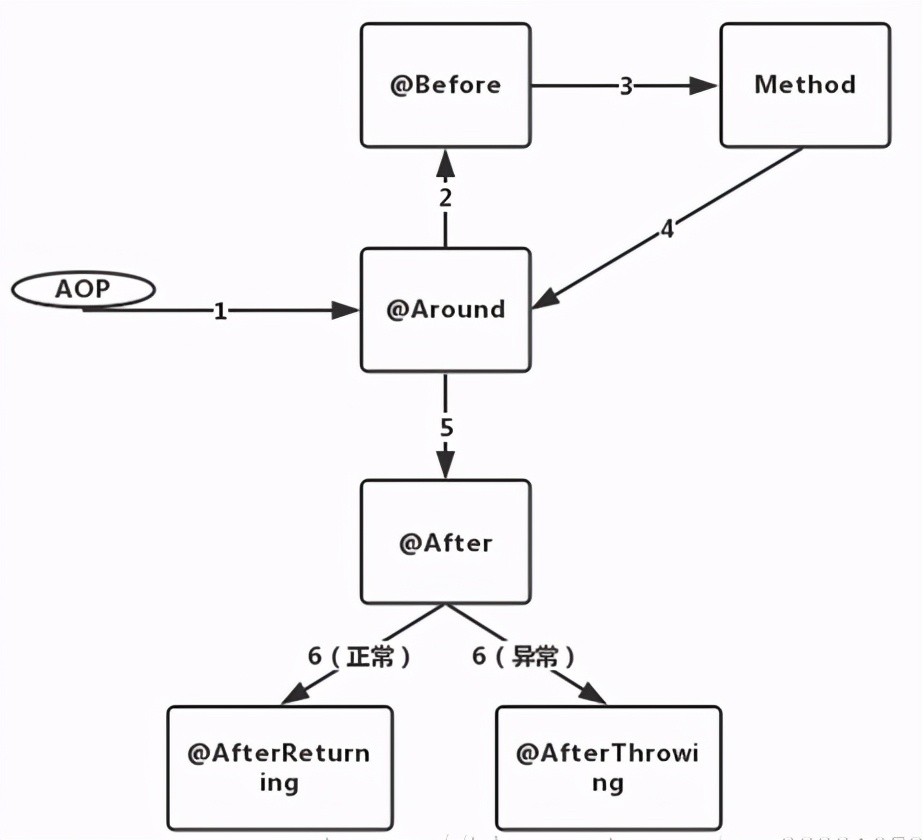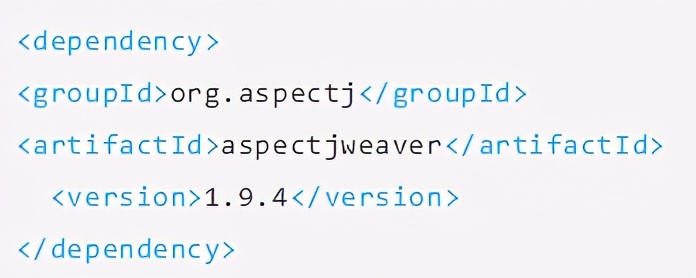前面连续介绍了几篇上手Spring的基础文章
- 测试同学从0到1上手Spring
- 测试同学上手Spring 之IoC深入解析
- 测试同学上手Spring 之DI深入解析
AOP解析
今天来介绍Spring的另一个核心技术点AOP,AOP的概念不好理解,希望大家仔细阅读文章并按照文章中的代码进行练习,届时一定会有很大的收获!
AOP (Aspect OrientProgramming),直译过来就是 面向切面编程。AOP 是一种编程思想,是面向对象编程(OOP)的一种补充。面向对象编程将程序抽象成各个层次的对象,而面向切面编程是将程序抽象成各个切面。从《Spring实战(第4版)》图书中扒了一张图:
从该图可以很形象地看出,所谓切面,相当于应用对象间的横切点,我们可以将其单独抽象为单独的模块。
Spring提供了面向切面编程的丰富支持,是通过动态代理实现的。允许通过分离应用的业务逻辑与系统级服务(例如:审计(auditing)和事务(transaction)管理)进行内聚性的开发。应用对象只实现它们应该做的——完成业务逻辑——仅此而已。它们并不负责(甚至是意识到)其它系统级别的关注点,例如:日志或事务支持。
AOP 要达到的效果是,保证开发者在不修改源代码的前提下,去为系统中的业务组件添加某种通用功能。
AOP基本运行流程如下图所示:
AOP 领域中的特性术语:
- 横切关注点:跨越应用程序多个模块的方法或功能。即是与我们业务逻辑无关的,但是我们需要关注的部分,就是横切关注点。如日志 , 安全 , 缓存 , 事务等等....
- 切面(ASPECT):横切关注点被模块化的特殊对象。即,它是一个类。
- 通知(Advice):AOP 框架中的增强处理。通知描述了切面何时执行以及如何执行增强处理。它是类中的一个方法。
- 目标(Target):被通知对象。
- 代理(Proxy):向目标对象应用通知之后创建的对象。
- 连接点(JointPoint):表示应用执行过程中能够插入切面的一个点,这个点可以是方法的调用、异常的抛出。在 Spring AOP 中,连接点总是方法的调用。
- 切入点(PointCut):可以插入增强处理的连接点。
- 引入(Introduction):引入允许我们向现有的类添加新的方法或者属性。
- 织入(Weaving): 将增强处理添加到目标对象中,并创建一个被增强的对象,这个过程就是织入。
Advice通知
通知(Advice)是切面的一种实现,可以完成简单织入功能(织入功能就是在这里完成的)。Spring AOP 中有 5 中通知类型,分别如下:
各个通知的执行顺序如下图所示:
实例编码
需求:在类中添加日志功能,如下图:
实现方法1:在各个类中添加方法logMsg()。如果类数量少,问题不大,如果有几百个类需要处理,那么工作量就很大了。
实现方法2:通过aop来实现
首先,mvn中添加配置
实例如下:
创建接口
- public interface UserService {
- public void add();
- public void delete();
- public void update();
- public void search();
- }
创建切入点类
- public class UserServiceImpl implements UserService {
- public void add() {
- System.out.println("增加用户");
- }
- public void delete() {
- System.out.println("删除用户");
- }
- public void update() {
- System.out.println("更新用户");
- }
- public void search() {
- System.out.println("查询用户");
- }
创建类,实现@Before通知
- import java.lang.reflect.Method;
- import org.springframework.aop.MethodBeforeAdvice;
- public class BeforeLog implements MethodBeforeAdvice {
- //method : 要执行的目标对象的方法
- //objects : 被调用的方法的参数
- //Object : 目标对象
- public void before(Method method, Object[] objects, Object o) throws Throwable {
- System.out.println( o.getClass().getName() + "的" + method.getName() + "方法被执行了");
- }
- }
创建类,实现@After通知
- import java.lang.reflect.Method;
- import org.springframework.aop.AfterReturningAdvice;
- public class AfterLog implements AfterReturningAdvice {
- //returnValue 返回值
- //method被调用的方法
- //args被调用的方法的对象的参数
- //target 被调用的目标对象
- public void afterReturning(Object returnValue,Method method, Object[] args, Object target) throws Throwable {
- System.out.println("执行了" + target.getClass().getName()
- +"的"+method.getName()+"方法,"
- +"返回值:"+returnValue);
- }
- }
编辑xml文件
- <?xmlversion="1.0"encoding="UTF-8"?>
- <beansxmlns="http://www.springframework.org/schema/beans"
- xmlns:xsi="http://www.w3.org/2001/XMLSchema-instance"
- xmlns:context="http://www.springframework.org/schema/context"
- xmlns:aop="http://www.springframework.org/schema/aop"
- xmlns:p="http://www.springframework.org/schema/p"
- xmlns:c="http://www.springframework.org/schema/c"
- xsi:schemaLocation="http://www.springframework.org/schema/beans
- https://www.springframework.org/schema/beans/spring-beans.xsd
- http://www.springframework.org/schema/context
- https://www.springframework.org/schema/context/spring-context.xsd
- http://www.springframework.org/schema/aop
- http://www.springframework.org/schema/aop/spring-aop.xsd">
- <context:annotation-config/>
- <!--注册bean-->
- <beanid="userService"class="com.my.demo.aop.UserServiceImpl"/>
- <beanid="beforelog"class="com.my.demo.aop.BeforeLog"/>
- <beanid="afterLog"class="com.my.demo.aop.AfterLog"/>
- <aop:config>
- <!--切入点 expression:表达式匹配要执行的方法-->
- <aop:pointcutid="pointcut"expression="execution(*
- com.my.demo.aop.UserServiceImpl.*(..))"/>
- <!--执行环绕; advice-ref执行方法.pointcut-ref切入点-->
- <aop:advisoradvice-ref="beforelog"pointcut-ref="pointcut"/>
- <aop:advisoradvice-ref="afterLog"pointcut-ref="pointcut"/>
- </aop:config>
- </beans>
测试类如下:
- public static void main(String[] args) {
- ApplicationContextcontext = new ClassPathXmlApplicationContext("bean3.xml");
- UserServiceuserService = (UserService) context.getBean("userService");
- userService.search();
- }
执行测试代码,结果如下
com.my.demo.aop.UserServiceImpl的search方法被执行了 //before方法执行
查询用户 //UserServiceImpl中的search方法
执行执行了
com.my.demo.aop.UserServiceImpl的search方法,返回值:null//after方法执行
可以发现由于实现了@Before通知@After通知,我们在调用方法前后,就分别自动对before 和afterReturning完成了调用。








































